- Home
- Peter Lovesey
Diamond Solitaire pd-2 Page 20
Diamond Solitaire pd-2 Read online
Page 20
“Give me a break, man. Four cars were brought in last night.”
“May I take a look at this collection? I am assigned to the case.”
“You’re welcome.”
He was led to the back of the garage, through an office into a large room where the items he’d just heard listed were displayed on a long trestle table. The impression he’d first gained, of good-natured inefficiency, was given a sharp corrective. Every piece was already labeled and assigned a number, with the position where it was found in the car duly noted.
The Buick’s interior hadn’t been cleared of rubbish since February at least, judging by the date of a gasoline receipt Someone had collected a stack and clipped them together. It would be the devil’s own job to try and identify something discarded by Mrs. Tanaka’s killer.
“You checked the boot, I suppose?”
“Which boot was that?” his informant asked.
He could do without differences in the language adding to his problem. “The storage place at the rear of the car.”
“The trunk. Yeah. We checked.”
“Just that I didn’t see any mention of the boot on these labels. Now I understand why.”
“Right.”
He bent over to look at the ballpoint pens. “I suppose you can tell if these were used recently. It’s okay, I’m not going to touch.”
“How would we know that?”
“If a ballpoint hasn’t been used for some time, it gets dry. When you write with it, you have to run the point over a surface for a moment to get some ink.”
His friend the evidence technician received this statement of the obvious more solemnly than it deserved. “That may be true, but I know of no test that would tell you how long it is since a pen was used. It would depend on certain variables, such as the temperature where it was stored. Jesus, man, we can’t even tell with accuracy how long the body has been left someplace, so I don’t see us succeeding with ballpoints.”
“No, but if the pen delivers the ink straightaway, the chances are it was used not long ago.” He was sounding like Sherlock Holmes, except that this wasn’t impressing anyone, least of all himself. Better say no more about ballpoints. “May I examine the receipts?”
“Sure. Just hold them by the clip and use this probe to separate them.”
“I can’t imagine the killer stopped at a gas station anyway,” Diamond commented, picking up the sheaf of receipts. “It’s unlikely any of these would carry his prints.”
“We can check the date, no problem,” said the technician.
“I’m not looking for a date,” Diamond told him. He was acting mainly on impulse now, as he turned the receipts over and used the wooden probe to flick through the blank squares of paper. The pens had suggested a possibility, a long shot.
“You think there might be something written on the backs of those receipts?” the technician asked.
“Have you checked already?”
“Haven’t had time. Why would anyone do that?”
“The little girl-the one who was kidnapped-was a dab hand at drawing.”
“And you figure that could give you a clue?”
“It might,” said Diamond. “Unfortunately,” he added, replacing the receipts on the table, “none of these are marked.”
He picked up the parking slips and inspected them in the same way. Naomi had not used them for drawing either. He clicked his tongue in exasperation.
“Seen enough?”
“Am I holding you up?”
“It’s okay.”
“Then I’d like to sift through the rest of this stuff. If you want to get back to your work, I can promise I won’t leave my prints on anything.”
“That’s okay by me.”
It was nice to be trusted.
The chance of finding anything significant was remote, but even sorting through a collection of rubbish was better than doing nothing at all. Using two probes like chopsticks, he examined the items systematically, looking for signs of recent use. There was a roll of peppermints, and it occurred to him that Naomi might have been offered one to pacify her, but the mint that was visible was so dusty that it must have been unwrapped months ago.
With his thoughts still on the possibility that Naomi might have been offered something edible to stop her from protesting, he turned to the takeout containers-a stack of six of different shapes from various fast-food places. Odors of sweet and sour-sweet what and sour what he preferred to pass over-lingered around them. Nor did he care to imagine what the interior of the Buick must have smelt like on a warm day when the windows had been closed for some time.
There were two containers apparently of fairly recent origin, so he extracted them from the stack. These weren’t polystyrene like the others, but were boxes made from thin white card. Judged by the grease-stained, sugary interiors, they had probably contained doughnuts.
He turned one over to look at the underside. It would have made a good surface for drawing. However, it was blank. Why was he so reluctant to drop this supposition that Naomi had left a drawing-a drawing, moreover, that provided information? He had a sense of being driven by some force akin to telepathy, as if the child were willing him to find what she had left. This wasn’t entirely illogical, for occasionally in his life he’d experienced premonitions that had been fulfilled, such as the certainty that he would meet a particular old friend in a strange town.
So when he picked up the second box and saw pen marks on the underside of the lid, his pulse may have quickened, but he did not punch the air with his fist or shout, “Eureka!”
He explained with great patience to Sergeant Stein at the station house how Naomi liked to make drawings, probably to compensate for the noncommunication enforced by her muteness.
“And you think this is her work?”. said Stein.
“Not this precisely. It’s a copy I made of the drawing on the food container. I left the box down at the workshop with all the other things found in the car. The ink matched one of the ballpoints found on the floor beside the front passenger seat. There’s no way of proving Naomi did the drawing, but I could tell from the state of the box that it hadn’t been lying in the car for long. I think the killer may have stopped at some point to feed her, or she may simply have found the box in the car and used it for the sketch.”
“You call that a sketch?” said Stein. “Don’t get me wrong, but it looks more like a doodle to me. What is it?”
“I’m not certain myself yet,” Diamond admitted. “The original is about twice the size, or a little more,” he added, placing his notebook open on the desk.
Stein said after a pause, “You really think this represents something?”
“If Naomi did it, yes. She has an individual way of looking at things, but her drawing is pretty accurate.”
“Is it a map?”
“I suppose it could be.”
“If it’s going to be any help to us, it has to be,” said Stein. “I mean, what have we got here? Is this some kind of overpass? Because they’re not common in New York City.”
Diamond stared at the drawing. He saw what Stein had obviously seized on-the broad causeway stretching southeast to northwest, apparently crossing minor routes. “If so, what’s the rectangular object there?”
“Automobile, I guess.”
“A bird’s-eye view, you mean?”
“Could be.”
“Then what is this elongated shape along the center?”
Stein considered for a moment. “You say this kid has an original way of seeing things. Maybe we’re looking at the underside of the Buick. This could be the exhaust.”
“The underside?” Diamond doubted whether a child of that age had such technical know-how, and said so. He also doubted whether Naomi was capable of the conceptual ability necessary to draw a map. “She draws from memory what she has actually seen. In England she was taken on a train, and later she made an accurate sketch of the back of the seat facing her.”
“Was that helpful
to your investigation?”
“Not directly, no.”
Sergeant Stein lifted his eyebrows as if to question the value of more time spent deciphering Naomi’s work.
Diamond said, “This object that you think could be a car looks awfully like an old-fashioned razor blade to me.”
“Uh huh,” said Stein without committing himself.
“Before they invented disposable razors.”
“I remember razor blades,” said Stein, “but if that’s a blade, I have a problem understanding the rest of the drawing.”
“Me too.”
“I’ll just attend. to a couple of other things that came up.”
A bandoned to ponder the mystery alone, Diamond tried turning his notebook to see if die picture made more sense orientated differently. There was no certainty that what he’d taken to be the top was actually so; you can turn a food container any way you like and draw on it. No new possibilities leapt out. The rectangular shape still looked like a razor blade from every angle. Now that he’d lodged that idea in his brain, he couldn’t visualize anything else.
Towards noon, Lieutenant Eastland, the officer in charge of the case-the man who had compared him to Winnie the Pooh-came in and said there was some progress in identifying the dead woman. The Japanese police had checked the Yokohama address in the passport. Mrs. Tanaka was divorced and lived alone. Until the previous November she had been employed as a secretary at Yokohama University.
“A secretary? That begs a few questions,” Diamond commented. “It could mean she was a high-powered administrator or simply a typist.”
“My information is that she worked in the faculty of science as one of the team of people operating word processors,” Eastland told him. “As for the kid-”
Diamond interrupted. “Lieutenant, there’s something I should tell you about the kid.” This would be embarrassing, but it had to be admitted. “I’m pretty sure Naomi wasn’t Mrs. Tanaka’s child. She had a daughter of her own who died. I, em, I found this picture of the grave. This was the child listed in the passport.” He produced the photo from his pocket and prepared to be sliced into small pieces. The withholding of evidence wasn’t the way to win friends and influence people.
The inevitable question came: “Where did you get this?”
He answered, explained and apologized.
“Why are you showing it to me now?” Eastland asked without otherwise reacting. He was a tight-lipped, gaunt-looking cop in his forties, with a measured style of speech.
“Because it may have a bearing on the case.”
“You knew that last night.”
“I only examined it after you’d finished with me.”
“Couldn’t take more of the same, huh?”
“That wasn’t the reason.”
“So what was?”
“Priorities. I wanted to keep it simple. The first thing was to get the machinery in place to find Naomi, never mind who she is.”
“Did you remove anything else from the wallet?”
“No.”
“Can I rely on that?”
“Absolutely.”
“You know what you are?”
“I know what you think I am.”
“So long as we both understand,” said Eastland flatly. “Now would you be so gracious as to share with me the drawing you were discussing with Sergeant Stein?”
The sarcasm couldn’t have been more blatant, but at least there was some recognition of Diamond’s efforts at consultation.
He opened his notebook again. Not wishing to preempt any ideas the lieutenant might have, he said nothing about the razor blade.
“You believe the kid drew this?”
Diamond explained that he had made a copy.
Eastland frowned at the drawing for some time. Finally, all he could find to say was, “What’s your opinion?”
“I think the small object is a razor blade.”
“Could be. In that case, what is it standing on-a shelf? Are we in a bathroom here? This semicircular section-does this represent a sink?”
“I hadn’t thought of that.”
“The bathroom attached to the murder room has a similar basin, only the shelf is at quite a different angle. No bathroom shelf I ever saw is suspended across the width of the basin. Mind you, kids draw things from strange angles.”
“She’d have needed to be taller than you or me to look down on the shelf in that bathroom,” Diamond commented.
“I’m saying kids get things out of line.”
“She’s an accurate artist.”
“And you think this is significant?”
“With not much else to go on���” said Diamond, his voice trailing away as a new possibility dawned.
“Even if it is a drawing of the bathroom,” said Eastland. “Even if there was a razor blade in there-and I don’t have any recollection of one-where does it lead us?”
Suddenly the marks made sense to Diamond. Everything clicked into mental focus. “It’s a tattoo.”
“A what
“The razor blade is a tattoo. Take another look. This thing you thought was the shelf is obviously someone’s arm against a steering wheel. She draws what she sees in front of her. I think that’s the suspect’s arm. It’s the view Naomi must have had if she was strapped into the front seat beside him.”
Eastland stared at it for some time. “You could be right.”
CHAPTER TWENTY-THREE
One of the older cops passing through the office had a memory of a razor blade tattoo. It had been the emblem of a teenage street gang of the late 1970s that had created a certain amount of mayhem in a rundown area of Brooklyn, inspired by the punk-rock movement. The membership had reached about forty at the peak around 1978. By the eighties new gangs had taken over.
“Presumably you kesep records of tattoo marks of known criminals?” Diamond asked.
“They’ll be on computer, sure.”
They ran a check. Eleven males were listed as having a razor blade tattoo on one arm or the other. Not all had been members of the Brooklyn gang. Several, it seemed, simply liked the razor blade design; one extreme case had a chain of them running from the back of one hand, up his arm and over his shoulder down to the opposite hand.
The computer operator accessed the details of each. Three of the Brooklyn gang had descriptions promisingly close to Diamond’s memory of Leather-jacket. He asked for mug shots. This entailed a visit to Records, in another building on the same block. The files were spread on a table for inspection by the time he got there. His pulse quickened.
Naomi’s picture had paid off.
One of them was Leather-jacket. No question. The mean, narrow face, the eyes and, in the profile shot, the Charlton Heston nose.
“That’s him.”
“Lundin? He isn’t nice.”
The name was Fredrik Anders Lundin. Aged thirty-two. A history of juvenile crime followed by two sentences for armed robbery. Sandwiched between them was one for murder, but he had been released on appeal. There was information that since coming out after serving three years of the second rap for armed robbery, Lundin was offering his services as a contract killer. He was currently under police surveillance (the file claimed), presumably in prospect of putting him away for a long term, rather than some token sentence for the charge of intent.
“It says you have tabs on him.”
Lieutenant Eastland said in his slow-speaking way, “You’re one hundred percent certain this is the guy?”
“Absolutely.”
“You saw him meet with Mrs. Tanaka and the kid in the airport parking lot?”
“Lieutenant, I was as close to him as I am to you right now.”
“Okay, we’ll pull him in.”
“How?”
Eastland gave a shrug that said English detectives were dense. “That’s what patrols are for.”
“Look, this isn’t a simple arrest,” Diamond pointed out. “This man is a killer. He’s abducted a child. Her safety
is paramount. You send two patrolmen in and people could start shooting.”
“What’s your advice, then-a stakeout?”
“He’s already under surveillance, according to this.”
“Don’t believe everything you reaa in records,” Eastland cautioned. “Surveillance could mean we have a guy who watches him play pool a couple of nights a week.”
Diamond couldn’t be certain how much of this laid-back attitude was the New York detective’s insulation against the dangers out there on the streets. He was in earnest, and he meant to leave nothing to chance. “Lieutenant, you asked for my advice. I’m suggesting some subtlety is necessary. I don’t think you should attempt to arrest him in the room where he’s holding Naomi. That’s putting her in real danger.
“Mr. Diamond, I’m deeply obliged to you,” said Easdand, affecting an English accent with about as much success as Dick Van Dyke in Mary Poppins. “Let’s take a jolly old spin out to Queens where the gentleman resides and be subtle. I assume you want to be on the team.”
Diamond wasn’t amused by the sarcasm, but he accepted an offer from Sergeant Stein to ride in his car. When they emerged from the Midtown Tunnel, the afternoon was drawing on. Some of the streetlights were switched on.
“Do you carry a piece?” Stein asked at some point on the journey.
“No.”
“Is that light-mat English cops go unarmed?”
“Generally, yes.”
“Didn’t you ever need one?”
“Not up to now.” He could have added that he was notoriously cack-handed, that in his possession a gun would go off when it was least expected, like now, from the jolting he was getting. The seat had no springs at all that he could discern.
Stein commented, “Me-I’d have been dead five times over without my automatic.”
The area they were driving into was neither the best of Queens, nor the worst. The turn-of-the-century tenements had probably been smart addresses when they were built. The fire escapes that fronted them were still festooned with evidence of the warm afternoon that had just come to an end: canvas chairs, pot-plants, bedding, beer cans, takeout boxes.
A patrolman flagged them down on a street corner. “You can’t drive past here. The suspect has a view of the street.”

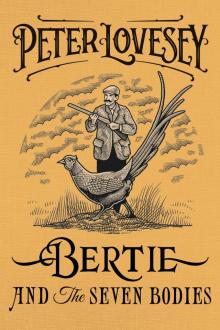 Bertie and the Seven Bodies
Bertie and the Seven Bodies The Headhunters ihmi-2
The Headhunters ihmi-2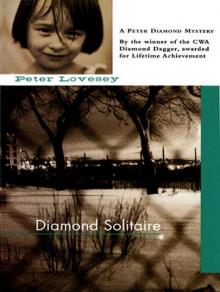 Diamond Solitaire pd-2
Diamond Solitaire pd-2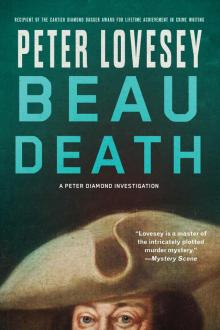 Beau Death
Beau Death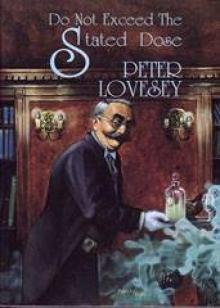 The Case Of The Dead Wait
The Case Of The Dead Wait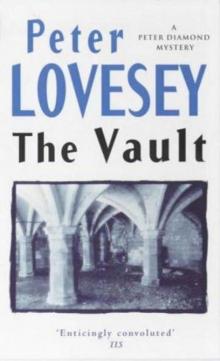 The Vault
The Vault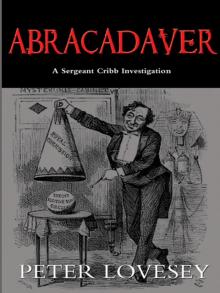 Abracadaver sc-3
Abracadaver sc-3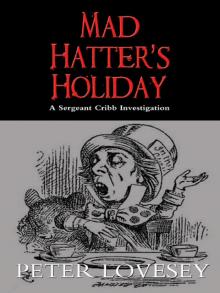 Mad Hatter sc-4
Mad Hatter sc-4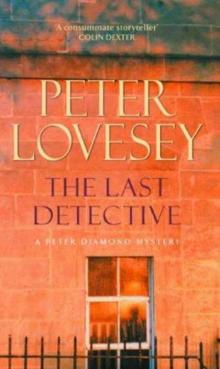 The Last Detective pd-1
The Last Detective pd-1 The Reaper
The Reaper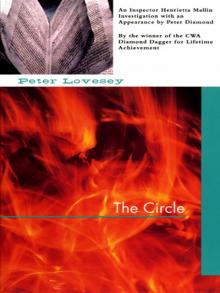 The Circle
The Circle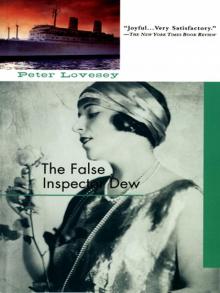 The False Inspector Dew
The False Inspector Dew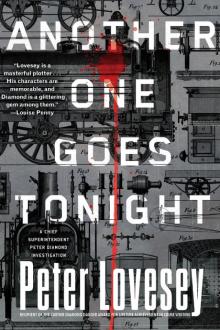 Another One Goes Tonight
Another One Goes Tonight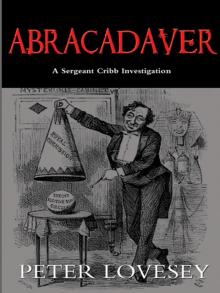 Abracadaver
Abracadaver Waxwork sc-8
Waxwork sc-8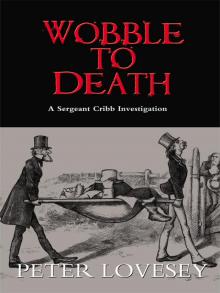 Wobble to Death sc-1
Wobble to Death sc-1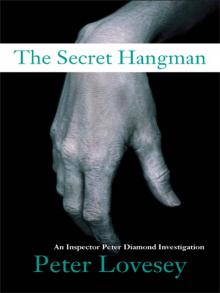 Peter Diamond - 09 - The Secret Hangman
Peter Diamond - 09 - The Secret Hangman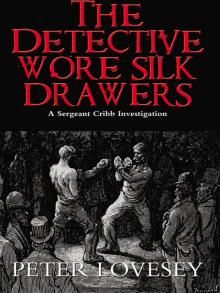 The Detective Wore Silk Drawers sc-2
The Detective Wore Silk Drawers sc-2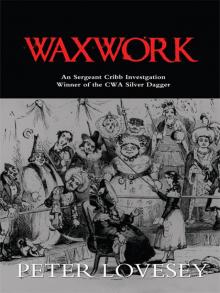 Waxwork
Waxwork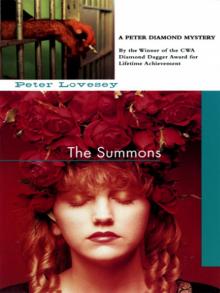 The Summons
The Summons Mad Hatter's Holiday
Mad Hatter's Holiday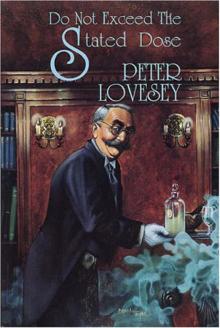 Do Not Exceed the Stated Dose
Do Not Exceed the Stated Dose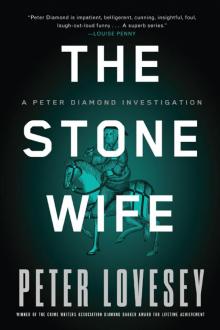 The Stone Wife
The Stone Wife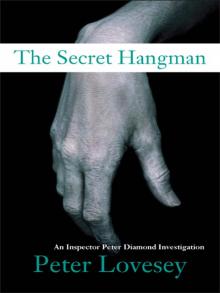 The Secret Hangman pd-9
The Secret Hangman pd-9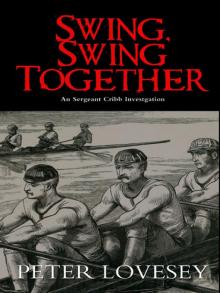 Swing, Swing Together sc-7
Swing, Swing Together sc-7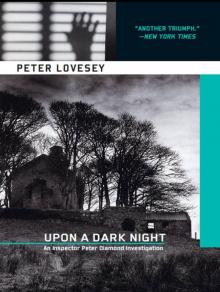 Upon A Dark Night
Upon A Dark Night Bloodhounds
Bloodhounds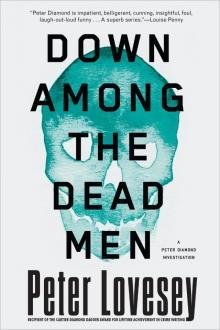 Down Among the Dead Men
Down Among the Dead Men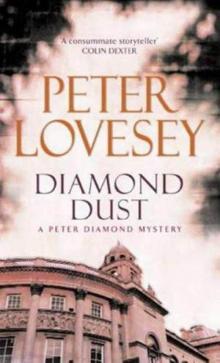 Diamond Dust
Diamond Dust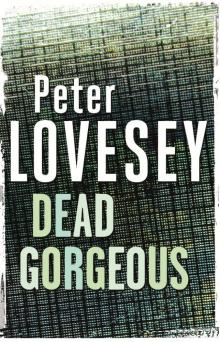 Dead Gorgeous
Dead Gorgeous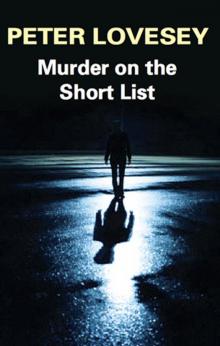 Murder on the Short List
Murder on the Short List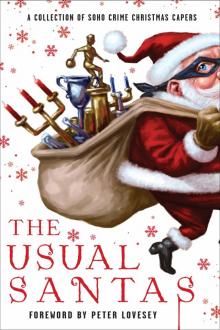 The Usual Santas
The Usual Santas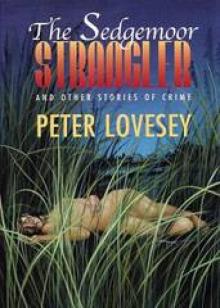 The Perfectionist
The Perfectionist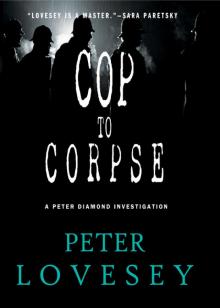 Cop to Corpse
Cop to Corpse Rough Cider
Rough Cider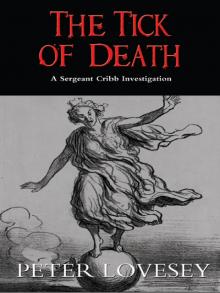 The Tick of Death
The Tick of Death Bloodhounds pd-4
Bloodhounds pd-4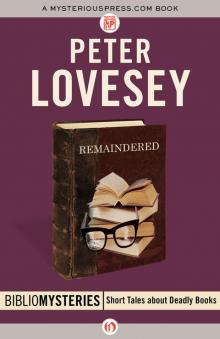 Remaindered
Remaindered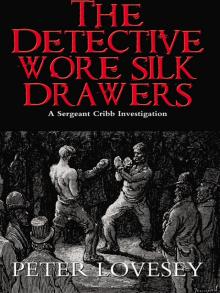 The Detective Wore Silk Drawers
The Detective Wore Silk Drawers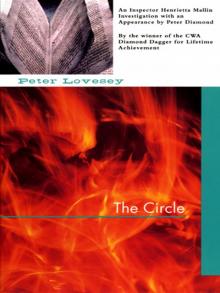 The Circle ihmi-1
The Circle ihmi-1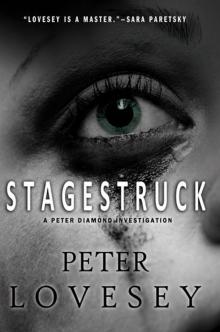 Stagestruck
Stagestruck The Secret of Spandau
The Secret of Spandau The Last Detective
The Last Detective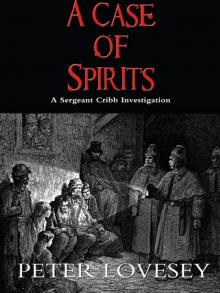 A Case of Spirits sc-6
A Case of Spirits sc-6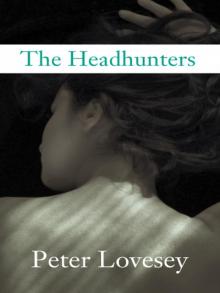 The Headhunters
The Headhunters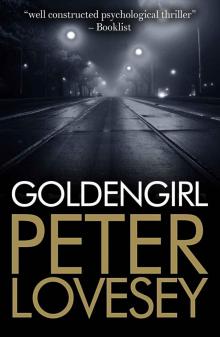 Goldengirl
Goldengirl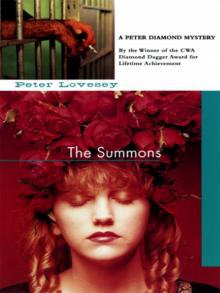 The Summons pd-3
The Summons pd-3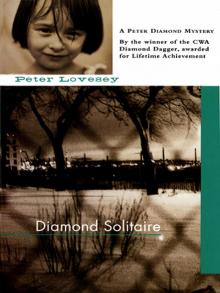 Diamond Solitaire
Diamond Solitaire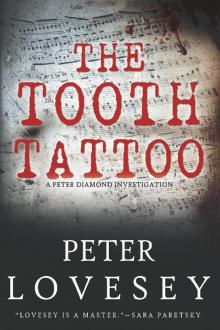 The Tooth Tattoo
The Tooth Tattoo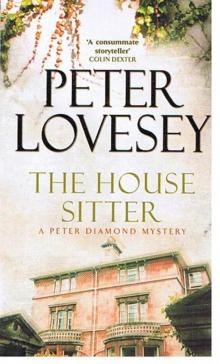 The House Sitter
The House Sitter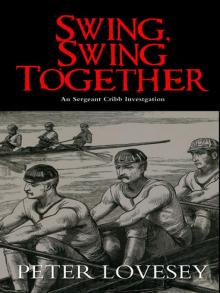 Swing, Swing Together
Swing, Swing Together